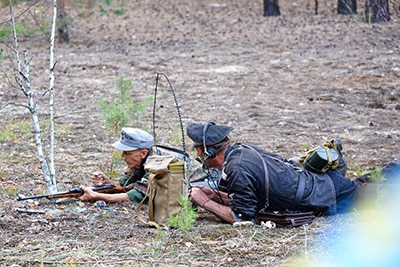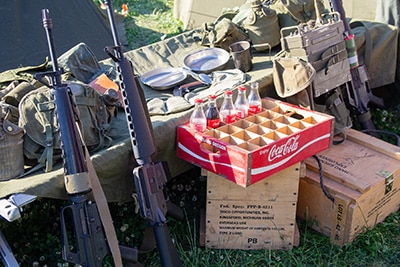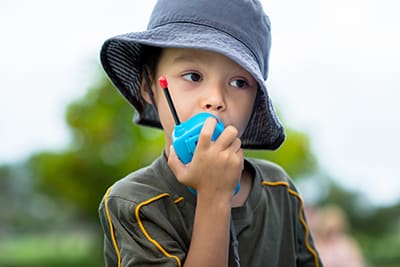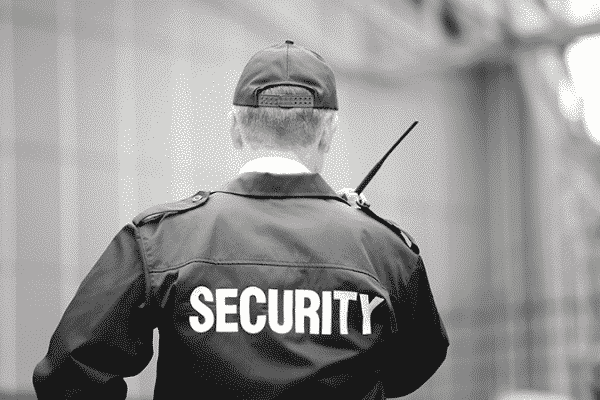Guides
History of the Walkie Talkie
The History of the Walkie Talkie

The walkie talkie [https://en.wikipedia.org/wiki/Walkie-talkie], as we know it today, was originally developed as a military tool however, it has gone on to become a widespread communication device across a range of sectors from security to construction and retail, as well as being a popular children’s toy.
There is some debate amongst experts regarding who invented the two way radio and its inception has been attributed to numerous engineers working on different variants concurrently in the 1930’s and early 40’s. The huge focus on this technology, at this time, was due to the war raging across the world and the urgent need for truly mobile communications for all divisions of the armed forces.
The first two way radio patent was granted to Henryk Magnushi [https://en.wikipedia.org/wiki/Henryk_Magnuski ] in 1936, however it is the UK born, Canadian Donald Hing [ http://dlhings.ca/walkietalkie.html ] that the invention of the walkie talkie is commonly attributed to. First called the ‘Pack-Set’, the device was initially created by Hing to assist pilot communications whist he was working for CM&S in 1937. Hing was subsequently loaned to the Department of National Defence and the National Research Council in Ottawa, during the Second World War, to further the development of the sets for military personnel.
Hing is best known for the C-58 Pack Set model which was in general circulation by 1942. This device offered a range of features including voice scramblers to avoid enemy eavesdropping, filters to remove the background noise of the battlefield and a selection of antennas and power supplies for versatility in the field. Thousands were manufactured and shipped worldwide to assist with the war efforts.

Henryk Magnushi continued his work on two way radios alongside Dan Noble, Marion Bond, Lloyd Morris and Bill Vogel whilst working for the Galvin Manufacturing Company, which later became Motorola. They developed the SCR-300 which offered 41 frequency channels and a range of 8 miles (13 km). However, it weighed 35 lb (16 kg) and was still carried as a backpack. It was in mass production by 1941 and was the first model to be given the moniker of ‘walkie talkie’; a term which was coined by a Toronto journalist after seeing a demonstration of soldiers walking and talking with the radio sets on their backs.
The British adapted the design of the SCR-300 for their own use and called it the Wireless Set 31. The Germans had a similar radio with rechargeable batteries and the Japanese had a version with a hand cranked generator.
Motorola Walkie Talkies Lead The Way
Motorola played a central role in the development of two way radio communications during the war and also went on to make the first purely hand held walkie talkie, the AM SCR-536 [https://en.wikipedia.org/wiki/SCR-536 ] which was released in 1941 and called the ‘Handie Talkie’. Weighing 5 lb (2.3 kg), it was a much lighter, making it better suited to battle conditions than other devices. 130,000 were manufactured for use by the Allied Forces.
However, it did have significant limitations compared to the SCR-300. To change the frequency, it had to be taken to the radio workshop to be adjusted by the engineers. It also only had a range of up to 1 mile, or 3 miles over water. The battle environment was tough on handsets which impacted greatly on these early devices by decreasing the battery life and the range.

After the war Raytheon worked with the US Military to develop a replacement for the SCR-536 and launched the AN/PRC-6. Its main advantage was that its frequency could be changed in the field by inserting a different crystal and retuning the set.
Post war, in the private sector, Motorola [https://www.motorola.com/us/about/motorola-history-milestones] returned to being a major player in the production of vehicle radio communication devices, especially for the police and fire departments.
They were also central to the evolution of handheld radios, focusing on making them more sophisticated and compact. They introduced the transistorized Handie-Talkie HT200 portable two-way radio in 1962. Small and lightweight compared to its predecessors, it weighed 33 ounces (935g) and was nicknamed the ‘brick’ because of its square shape and tough design.
Introduction of Kids Walkie Talkies to Households in 1970’s America.
Walkie talkies really became a household item as a popular toy for adults and kids in the 1970’s and 80’s. In 1977, in the US the Federal Communications Commission formally moved the official frequency for unlicensed “toy” walkie talkies from 27 MHz to 49 MHz, thereby making them more powerful for families to play with.
The early models of the walkie talkies, prior to the 1980’s did have some drawbacks, specifically as they used wide bandwidth which has more interference and they were controlled by a crystal oscillator. The crystals were manufactured for a specific frequency, and then

installed in the walkie talkie. Once installed, they were then set up using a radio communications test set. Modern sets do not require the crystals to be purchased and installed to change frequency.
In 1983, Motorola introduced the DynaTAC 8000X, a handheld unit which became a sort after device in personal communications. The next step in the evolution of the two way radio was the introduction of digital in the 1990’s, allowing for clearer sound quality, better security and the ability to set up complex group calls. However, analogue still has its place in the two way radio industry due to a lower unit cost.
Even after the mass proliferation of cellular phones, walkie talkies have continued to be popular as they work in areas with low cellular coverage and there are no call costs. Their industry use is diverse from hospitals to construction and private security, retailers, banks, public events, hotels, bar and of course the armed forces.

Today’s models are a faction of the size and weight of the original backpack style radios with some sets being as light as 2.4 oz (67 g). They typically offer between two and 14 channels to enable communications for different teams. Most handsets today include automated frequency scanners and hands-free applications as well as a host of other options from torches to buoyancy and even weather alerts.
They can even detect if the user has been unmoving for long time and will issue a warning to home base of a possible “man down scenario”, a great feature if your staff work alone frequently.
Other two way radios are designed for dangerous environments such as on oil and gas rigs, as well as dangerous factory settings. An impressive progression from the weighty and cumbersome devices first launched by the talented engineers of the 1930’s and 40’s.

